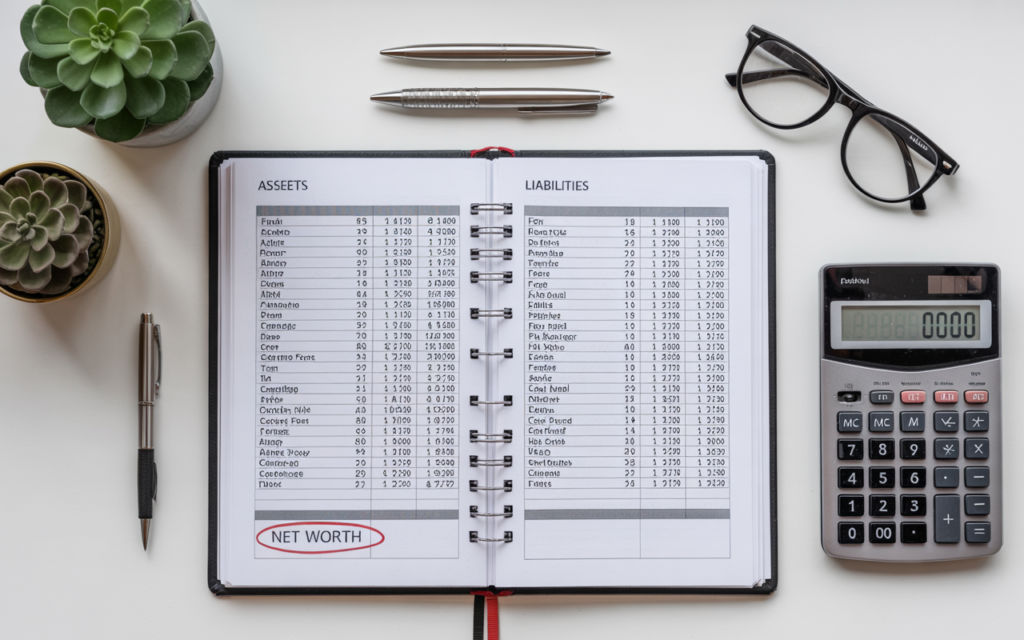Embarking on the path to financial wellness is like setting out on a grand voyage. It requires a destination, a map, and a well-equipped vessel to navigate the unpredictable waters of life. A financial plan is your personal map and compass, a strategic document that transforms vague hopes into a concrete reality. But to draw this map, you must first understand its essential landmarks. This leads to the foundational question every aspiring architect of their own future must ask: what elements are found in an effective financial plan? This is not merely an academic query; it is the starting point for building a life of security, freedom, and intentionality.
This comprehensive guide is designed to be your detailed atlas, illuminating every critical component of a robust financial strategy. We will journey through each essential section, breaking down complex concepts into simple, actionable steps. This exploration will provide you with the framework and confidence to take control of your financial destiny. By thoroughly understanding what elements are found in an effective financial plan, you can move from being a passenger in your financial life to being the captain of your own ship, steering confidently toward the future you envision.
The Cornerstone: Financial Goals and Objectives
Before a single number is crunched or a budget is drafted, your financial plan must have a heart and soul. That is found in your goals. Therefore, the very first answer when asking what elements are found in an effective financial plan? is a clearly defined set of financial goals and objectives. These goals are the “why” behind your plan; they provide the motivation to stay disciplined and focused over the long term.

Vague aspirations like “be wealthy” or “retire comfortably” are not sufficient. To be effective, your goals must be SMART:
- Specific: Clearly state what you want to achieve. Instead of “save for a car,” make it “save for a new Toyota Camry.”
- Measurable: Attach a specific dollar amount to your goal. “Save $10,000 for a down payment on a home.”
- Achievable: Your goals should be realistic given your current financial situation and timeline.
- Relevant: Ensure your goals align with your core personal values and what you truly want out of life.
- Time-bound: Set a specific target date for achieving each goal.
Organize your goals into different time horizons to create a clear roadmap:
- Short-Term Goals (1-3 years): These are immediate priorities. Examples include building an emergency fund, paying off high-interest credit card debt, or saving for a vacation.
- Mid-Term Goals (3-10 years): These require more substantial planning, such as saving for a home down payment or funding a child’s education.
- Long-Term Goals (10+ years): These are the major life milestones, with retirement being the most common.
This goal-setting process is the most crucial of what elements are found in an effective financial plan, as every other component will be designed to support the achievement of these objectives.
Your Starting Point: A Detailed Financial Snapshot
Once you know your destination (your goals), you must determine your exact starting position. A comprehensive snapshot of your current financial health is another of the non-negotiable what elements are found in an effective financial plan. This involves two key documents: a balance sheet and an income statement.

The Balance Sheet: Your Net Worth
A personal balance sheet calculates your net worth, which is a single, powerful number representing your financial standing at a specific point in time. It is calculated by subtracting your total liabilities (what you owe) from your total assets (what you own).
- Assets: Make a complete list of everything you own of value. This includes cash, savings accounts, investment portfolios (retirement and non-retirement), the market value of your real estate, vehicles, and other valuable personal property.
- Liabilities: List all of your outstanding debts. This includes mortgages, car loans, student loans, credit card balances, and any other personal loans.
This calculation provides a vital baseline from which to measure your progress year after year.
The Income Statement: Your Cash Flow
If your net worth is a snapshot, your cash flow is the motion picture of your financial life. It tracks the flow of money in and out of your accounts over a period, usually a month. Understanding your cash flow is critical because it shows you your capacity to save and invest. To determine your cash flow, you must meticulously track your income and categorize your expenses. This analysis helps identify where your money is going and where you might be able to cut back. This is an essential part of what elements are found in an effective financial plan.
The Action Plan: A Realistic Budget
Your budget is the engine of your financial plan. It is the practical tool that allocates your income toward your expenses and, most importantly, your financial goals. Many people view a budget as restrictive, but in reality, it is a tool for freedom. It gives you conscious control over your spending and ensures your priorities are being met.

There are various budgeting methods, and the key is to find one that you can stick with:
- The 50/30/20 Rule: This popular guideline suggests allocating 50% of your after-tax income to “needs” (housing, utilities, food), 30% to “wants” (entertainment, dining out), and 20% to savings and debt repayment.
- Zero-Based Budgeting: With this method, every dollar of income is given a specific job. Your income minus all your expenses, savings, and investments should equal zero. It’s a highly intentional approach.
A well-crafted budget is one of the most practical what elements are found in an effective financial plan, as it is the primary tool for implementing your strategy.
What elements are found in an effective financial plan for risk management?
A plan that only focuses on growth is a fragile one. A truly effective financial plan builds a fortress to protect you from life’s inevitable and unexpected challenges. This makes risk management one of the most important answers to the question, what elements are found in an effective financial plan?

The Emergency Fund
This is your first line of defense against financial shocks. An emergency fund is a liquid pool of cash, typically 3 to 6 months’ worth of essential living expenses, set aside for unforeseen events like a job loss, a medical emergency, or an urgent home repair. This money should be kept in a high-yield savings account, where it is safe and easily accessible but separate from your regular checking account to avoid temptation.
Insurance Planning
Insurance is the tool you use to transfer the risk of a financially catastrophic event to an insurance company. Your plan must include a thorough review of your insurance coverage to ensure it is adequate for your needs. This includes:
- Health Insurance: To cover medical expenses.
- Life Insurance: To provide for your dependents in the event of your death.
- Disability Income Insurance: To replace your income if you become unable to work due to illness or injury.
- Property & Casualty Insurance: To protect your home, vehicles, and other valuable assets.
Neglecting risk management can undermine even the best-laid plans. It is a foundational element when considering what elements are found in an effective financial plan.
The Growth Engine: A Prudent Investment Strategy
With your financial foundation secured, the next component is your plan for growth. An investment strategy outlines how you will use your capital to achieve your long-term goals. This is not about speculating or trying to time the market; it’s about creating a disciplined, long-term approach based on your specific circumstances.

Your investment strategy should be guided by:
- Risk Tolerance: An honest assessment of your comfort level with market volatility. Are you aggressive, moderate, or conservative?
- Time Horizon: The timeline for your goals is a major determinant. Long-term goals like retirement allow for a higher allocation to growth assets like stocks. Short-term goals require safer investments like bonds or high-yield savings accounts.
- Diversification: The age-old principle of not putting all your eggs in one basket is paramount. A diversified portfolio spreads your investments across different asset classes, industries, and geographic regions to smooth out returns and reduce risk.
Your written investment policy statement is a key document and a core part of what elements are found in an effective financial plan.
Planning for the Future: Retirement and Estate Considerations
The final pieces of a truly comprehensive plan look toward the very long term, ensuring your financial security in your later years and the orderly transfer of your wealth.

Retirement Planning
For most people, this is the largest financial goal of their lives. Your plan needs to specifically address how you will fund your retirement. This involves:
- Calculating your estimated retirement expenses.
- Determining the total nest egg you will need to generate that income.
- Creating a savings plan that details how much you need to contribute to your retirement accounts each month to reach your goal.
- A strategy for drawing down your retirement funds in a tax-efficient manner once you retire.
Estate Planning
Estate planning is about deciding how your assets will be managed and distributed after your death or if you become incapacitated. It is a critical, though often overlooked, element. A basic estate plan includes:
- A Will, which outlines your wishes for the distribution of your property and the care of any minor children.
- Powers of Attorney, which designate someone to make financial and healthcare decisions on your behalf if you are unable to do so.
- In some cases, Trusts can be used to manage assets, minimize estate taxes, and provide for beneficiaries with specific needs.
Considering your legacy is a mature and vital part of the answer to what elements are found in an effective financial plan.
The Living Document: Monitoring and Regular Reviews
A financial plan is not a static document that you create once and then shelve. It must be a living document that evolves as your life changes. One of the most important what elements are found in an effective financial plan is the built-in process for regular reviews.

It is essential to review your plan at least once a year, and after any major life event, such as:
- A marriage or divorce.
- The birth of a child.
- A significant change in income.
- The purchase of a home.
- Receiving an inheritance.
This regular monitoring ensures that your plan remains aligned with your goals and your current reality, allowing you to make necessary adjustments to stay on track. This adaptability is the final component of what elements are found in an effective financial plan.
Frequently Asked Questions (FAQs)
Q: What is the single most important element of a financial plan?
A: While all elements are interconnected, the most crucial starting point is a set of clearly defined, SMART (Specific, Measurable, Achievable, Relevant, Time-bound) financial goals. Your goals provide the “why” and direct every other decision in your plan.
Q: How often should I review my financial plan?
A: You should review your financial plan at least once a year to track your progress. It’s also essential to conduct a more thorough review after any major life event, like getting married, having a child, or changing careers, to ensure your plan still meets your needs.
Q: What is the difference between a financial plan and a budget?
A: A financial plan is the overall strategic roadmap for your entire financial life, encompassing goals, investments, insurance, and more. A budget is a specific, practical tool within that plan that details your monthly income and expenses to manage your cash flow effectively. A budget is one of the key what elements are found in an effective financial plan.
Q: Do I need a financial advisor to create a plan?
A: While you can certainly create a solid financial plan on your own using guides like this, a qualified financial advisor can provide personalized expertise, offer objective advice, and help you navigate complex situations. They can be especially helpful in developing a sophisticated investment or estate plan.
Conclusion
The question, what elements are found in an effective financial plan?, is the starting point for a journey toward financial empowerment. As we have seen, the answer is a collection of interconnected components that work together to create a cohesive strategy. From the deep personal work of setting meaningful goals to the practical mechanics of budgeting, investing, and managing risk, each element plays a vital role.
By taking the time to build a plan that incorporates all of these essential elements, you are doing more than just managing your money. You are creating a roadmap that gives you direction, a fortress that gives you security, and an engine that drives you toward the life you want to live. You are transforming your financial life from one of chance to one of choice. And the peace of mind that comes from that control is the most valuable asset of all. Understanding what elements are found in an effective financial plan is the key to unlocking that future.